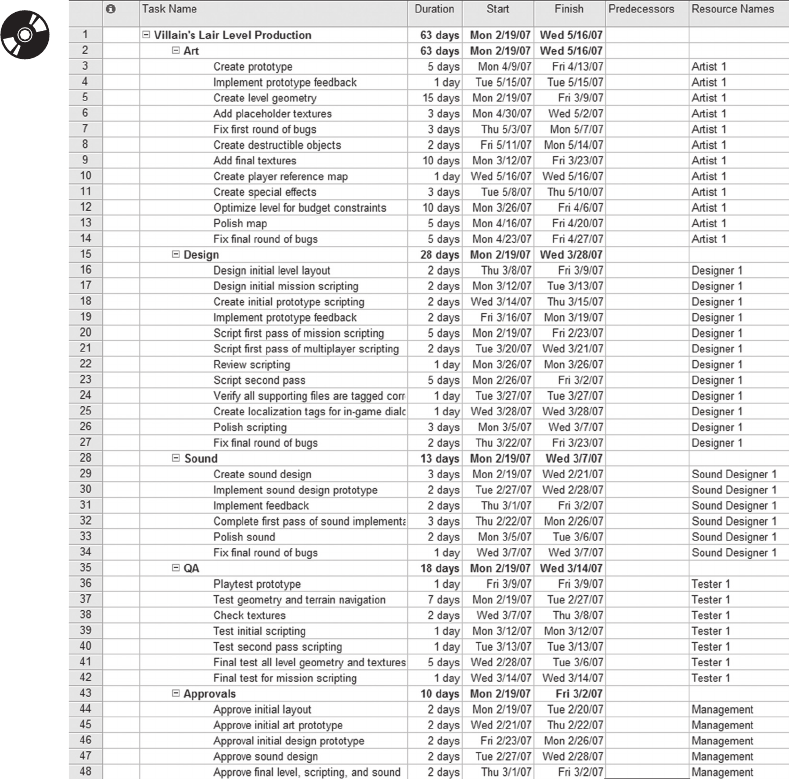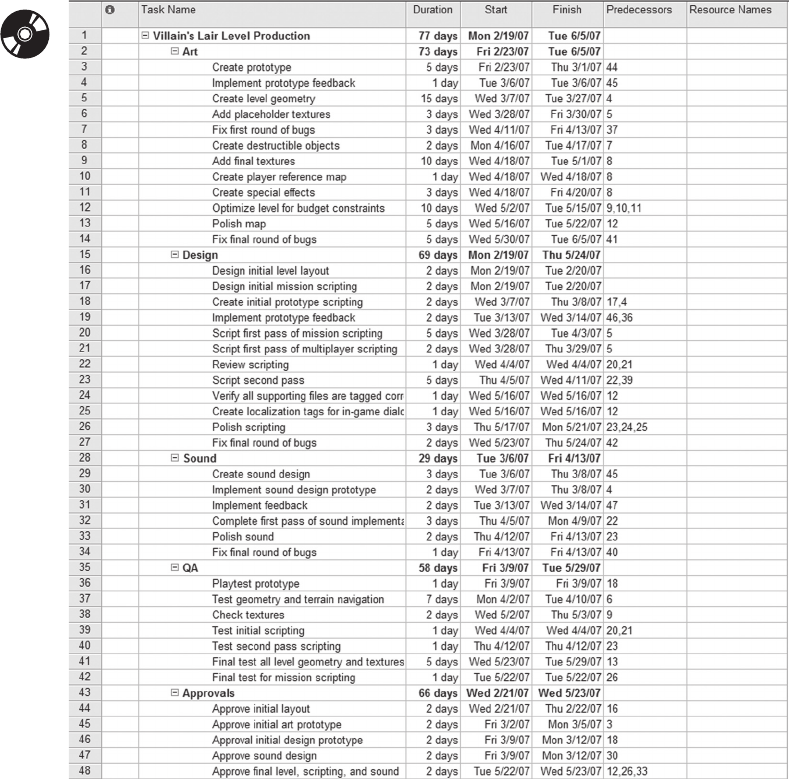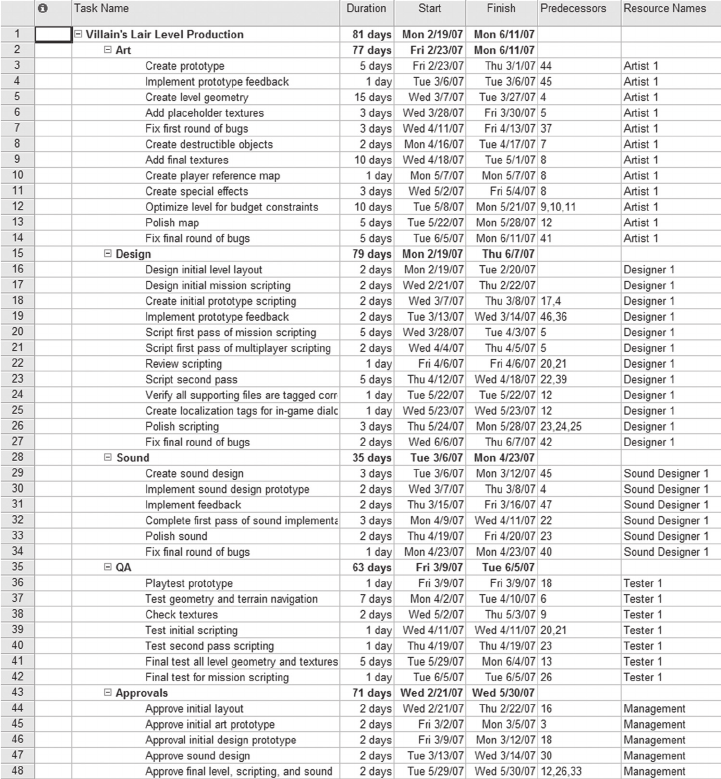
GAME PLAN 271
approved, level production comes to a standstill, valuable time is lost, and a
bottleneck is created. Additionally, if someone is overloaded with too many tasks,
they cannot keep up the same pace of work as others involved in the level pro-
duction process and will cause delays. So it is important to make sure that the
correct dependencies and resource allocations are included in the schedule. The
importance of this is best shown in Figures 16.4, 16.5, 16.6, and 16.7.
Figure 16.4 is a detailed level production schedule for the Villain’s Lair.
This does not include any task dependencies or assigned resources. Based on
FIGURE 16.4 A level production schedule with no dependencies or assigned resources.

272 THE GAME PRODUCTION HANDBOOK, 2/E
this schedule, all the art, design, sound, QA, and approval tasks will take 15 days
to complete.
Figure 16.5 is the same level production schedule with assigned resources.
Now that resources are assigned, you can see it takes 63 days to complete the
work. This increase happened because there is only one artist, one designer, one
sound designer, and one tester available to do all the work, and they can only
work on one task at a time. If the tasks were assigned to multiple artists and de-
signers, the time could be reduced.
FIGURE 16.5 A level production schedule with assigned resources.
O
N
T
H
E
C
D

GAME PLAN 273
Figure 16.6 is the same level production schedule with just the task depen-
dencies added. Now the scheduled time has increased to 77 days. This is because
there are several tasks that are on hold until another task is completed. For ex-
ample under the QA section, you can see that QA has more than three weeks of
nonproductive time between tasks 36 and 37. In an actual game development
environment, several levels would be in production at once, so it is likely that QA
would be testing another level during these three weeks.
FIGURE 16.6 A level production schedule with dependencies.
O
N
T
H
E
C
D

274 THE GAME PRODUCTION HANDBOOK, 2/E
Figure 16.7 is the same level production schedule with both the assigned
resources and task dependencies added. Now the work requires 81 days to com-
plete. This time could be brought in a few days by assigning another artist and
designer on the project for a few days.
Work breakdown structures and detailed schedules must be created for
every aspect of the project. If the producer and leads commit to making this
happen, the schedules can be very useful to everyone on the team. Also, after
FIGURE 16.7 A level production schedule with assigned resources and dependencies.

GAME PLAN 275
DESIGN SCHEDULES
Clint Hocking, Creative Director
Ubisoft
From a design standpoint, the amount of time you’re given for research (if any)
is never enough, and the amount of time you’re given between the end of any re-
search phase (if you have one) and the beginning of production is too much. The two
to three months I spent in research on Splinter Cell Chaos Theory was invaluable.
I recently had the opportunity to go back over the documentation and notes that
I took during that phase, and I can see very clearly that that is where the game was
born. I can also see that we were not quite ready to transition out of that phase and
that the things that were still not understood at the end of the research phase would
end up adding a lot of risk to the production.
Tracking Tasks
Tracking the schedule is important so that you know whether you are on schedule
or in danger of getting off schedule. Keeping the team informed of the schedule
progress is also important for the same reasons. If the team is not informed of
the schedule progress, it is similar to them working without a schedule at all;
they do not know whether things are on track and whether they are hitting the
milestone deadlines together as a team.
After the schedule is defined, appoint someone on the team to be the official
schedule tracker. There are several ways to track schedules, and each person will
have a preferred method for doing this. If you are using Microsoft Project, you
can track the actual time against the baseline schedule and make adjustments
as needed. If someone delivers an asset earlier or later, Microsoft Project will
recalculate the schedule. If you plan to use Microsoft Project to track the sched-
ule, it is worth the investment to train someone to become expert on using this
software.
spending all this time creating the schedule, put an equal amount of effort into
tracking and updating it.
If you are working on a two-year development cycle, don’t try to create a
detailed scheduled for the entire two-year process. Instead, concentrate on cre-
ating detailed schedules for each project milestone as needed. This gives you
more flexibility with the schedule, and adjustments can easily be made when
necessary.
..................Content has been hidden....................
You can't read the all page of ebook, please click here login for view all page.
